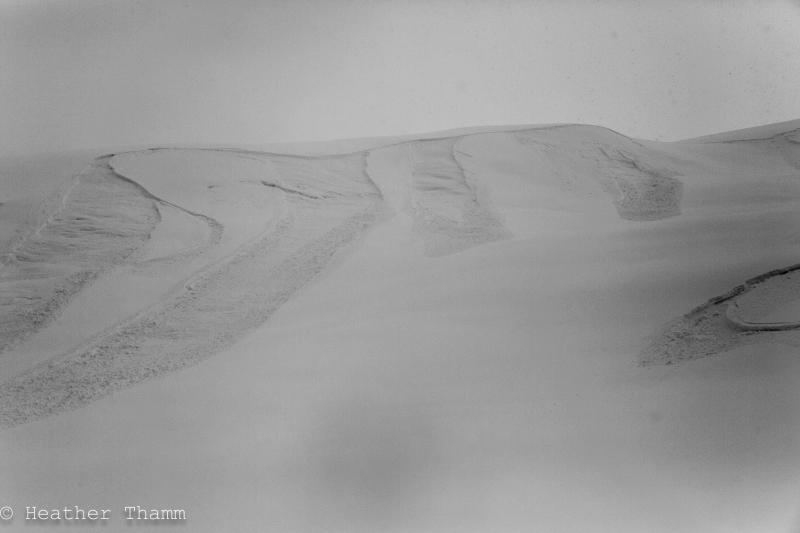A much anticipated snow event has arrived in Southcentral Alaska. Total snowfall amounts vary in depth depending on proximity to a series of low-pressure systems tracking over Prince William Sound. In the last 48 hours snowfall totals ranging from 4-12” have been recorded, with the largest amount in Portage Valley.
- 12” in Portage
- 8” on Eddies
- 5” on Center Ridge
- 1” at Summit Lake
- 4” at the top of Alyeska, Girdwood
In addition to the arrival of new snow the most notable weather concern yesterday was a period of strong Eastern winds. Yesterday moderate winds 10-20 mph increased to an average of 30mph for several hours in the evening with a few gusts reaching the 50’s on Sunburst.
Windslabs
Touchy wind slabs are the primary concern for today. We have an “up-side-down,” very poor snow structure within the top 6-15” of the snowpack depending on location. Over the last two weeks cold temperatures have created a faceted weak layer (4” thick) sitting on a firm ice crust between 1500’ – 3000’. New snow over the last two days combined with strong Eastern winds has formed wind slabs along leeward aspects of ridgetops and terrain features. These wind slabs are likely to be in the 6–12” range depending on location, Eddies could be slightly larger. Expect these wind slabs to be predictably tender and easy to initiate. With this said there is a potential for these wind slabs to be stiffer and more supportable in places where winds were stronger, like along ridgetops. Avoid large sustained slopes where the starting zone have a stiff supportable pillow like appearance. Today might be a great day to enjoy lower angle powder while practicing safe travel protocols.
Be on the lookout for any obvious signs of instability:
Recent Avalanches: Small isolated human triggered avalanches were observed yesterday and are likely today on slopes steeper than 35°.
Collapsing: Listen for “woomphing” sounds in places where the snow is supportable and your weight could be enough to collapse the weak faceted snow below.
Shooting Cracks: Be on the look out for supportable pillow-like snow that produces shooting cracks underfoot.
Photo taken yesterday afternoon of the Southwest face of Maynard Mountain in Portage Valley. Notice the widespread natural avalanches along steep convex rolls. These are an example of the overhead hazard in Portage Valley that warrent extra caution for ice climbers or anyone recreating directly under a steep slope.



